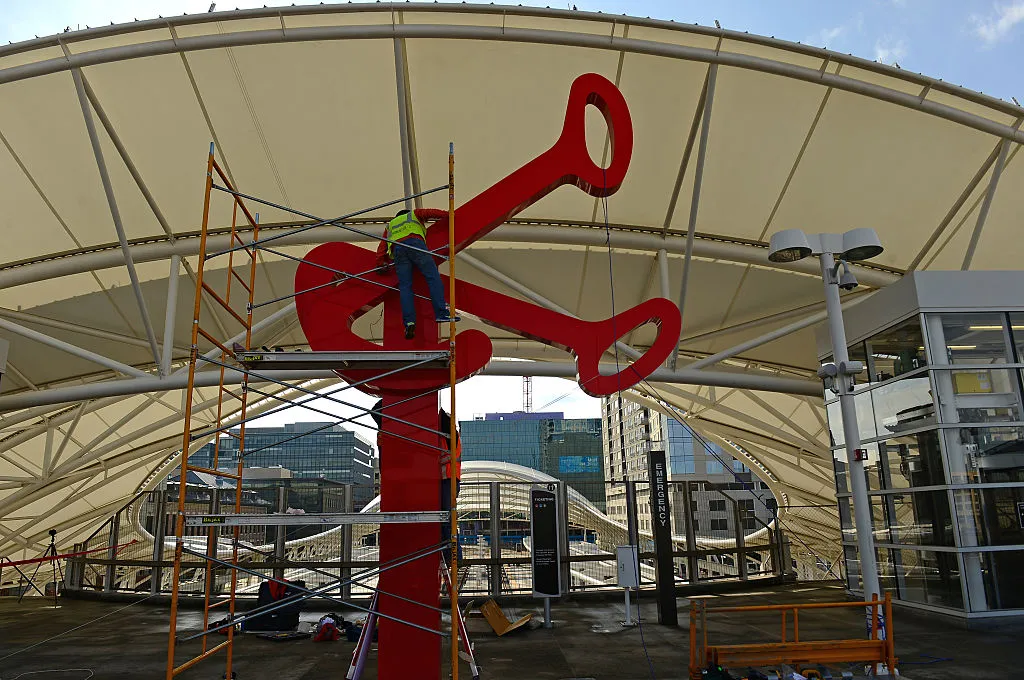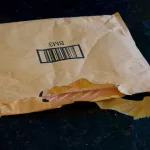
Nearly a year ago, Carlson Baker Arts quietly shuttered after over 30 years in business. Known for producing large-scale pieces from art-world heavyweights like Ellsworth Kelly, Jeff Koons, and Claes Oldenburg, the company has long been one of the most well-known art fabricators. Its closure is a clear indication of challenges currently plaguing the industry.
After the pandemic struck in 2020, production costs skyrocketed and supply chain disruptions made certain raw materials difficult to obtain for prolonged periods. Even several years on, those issues continued to plague CBA and the company’s business model was ill equipped to handle such disruptions, according to co-owner John Baker.
“A lot of our work is public art and those type of contracts are four and five years out. They are fixed-cost contracts,” Baker told ARTnews earlier this year. “Even trying to get quotes for materials from suppliers that we had used for years, particularly for metals that we use a lot, they’re good for 24 hours in some cases.”
Since public art commissions typically have inflexible budgets set by public entities, it fell on CBA to absorb cost hikes for materials, labor, or production. According to Baker, the company tried to do so but, with CBA’s overhead costs doubling, eventually they couldn’t make it work. Still, Baker said he was determined to finish any previous commissions in the pipeline and is now consulting former employees working on their own commissions. As art fabrication is such a unique skillset, and there are more public art pieces that require maintenance than ever, the overall job market is “incredible right now for people with skills.”
CBA is far from the only art fabricator that has suffered cost spikes and disruptions to raw materials. Daniel Tobin, co-founder of Urban Art Projects, a fabricator with locations in Brisbane, Shanghai, and Beacon, New York, said that Trump era tariffs on steel and aluminum—materials his foundry works with every day—have added financial strain and uncertainty. While those tariffs were enacted in 2018, the shutdowns and supply chain issues caused by Covid-19 exacerbated the issue.
Connecticut’s Lipincott Sculpture had several major fabrication jobs derailed due to price changes with materials, as well as delays caused by galleries suffering financial strain during the pandemic, Alfred Lipincott told ARTnews.
Meanwhile, Walla Walla Foundry, an art fabricator in Washington, said it suffered a near-doubling in bronze and ingot prices since the pandemic, according to president Jonathan Follett. However, the scale of the foundry’s existing inventory helped offset the rising materials cost and the company changed its purchasing practices to take advantage of price fluctuations. They further adjusted, according to Follett, by looking for efficiencies elsewhere in the business.
The other persistent challenge facing art fabricators appears to be sourcing workers for the unique trade. Despite widespread layoffs in industries like tech and media, the unemployment rate remains at 3.8 percent. According to one Bank of America economist, most sectors are probably near full employment—indicating a lot of bargaining power for workers and a lack of unemployed workers to hire.
“We’re finding it very hard to find skilled labor,” Tobin of UAP said. “We’ve had trouble filling vacancies in our wax department, our paint department, our finishing department.”
UAP has attempted to mitigate the issue through an apprenticeship program at New York’s Alfred University and offering pay above industry-standard rates, along with healthcare and other perks, according to Tobin.
Follett of Walla Walla Foundry similarly noted that the current job market has made it harder to retain workers and find and hire new candidates. Yet, art fabricators seem to be finding creative solutions to the challenges of the post-pandemic environment.
Philadelphia’s Monument Lab, a public art non-profit, worked around materials availability by collaborating with artists to source local materials or to recycle materials from other projects, which became a way to connect with the community more deeply and was a meaningful way to create, director Paul Farber told ARTnews.
Meanwhile, Lipincott Sculpture has adjusted its contract language to account for last-minute price adjustments and resulting delays, according to Lippincott. The company, which relies primarily on word-of-mouth, expanded its services during the pandemic to include restoration and consulting when many fabrication projects were put on hold. As a result, fabrication now only accounts for a small part of its business.
Some fabricators appear to have slowed down their processes to allow more time for internal evaluations and to account for price increases on fabrication, Natasha Logan, deputy director of New York-based public arts non-profit Creative Time, told ARTnews. Logan has seen the materials issues faced by fabricators from the commissioning side as Creative Time has had to pivot what materials it used in certain projects in recent years. Creative Time has additionally put in place larger contingency budgets when possible to account not only for material cost increases but also cost-of-living increases for artists.

Despite the pandemic-induced struggles, most art fabricators interviewed by ARTnews were optimistic about the future of the industry. The George Floyd protests in 2020 and the subsequent debates about monuments have spurred increased engagement and recognition of the importance of public art, particularly site-specific creations that address societal concerns, according to Nicholas Baume, the executive director of non-profit Public Art Fund.
“There has never been more interest and more activity in public art than there is now,” Baume told ARTnews. During the pandemic when major museums and galleries couldn’t mount exhibitions and public programs, Baume noted, “public art kept going.”
Public art, he said, can “give artists the opportunity to create site-specific or site-responsive works in relation to the fabric of the city, and for those artists’ works to be accessible and available to everybody free of charge. I think those things have also come to be valued and appreciated in a new way in all of the discussions around our cultural values, who we are, how we see ourselves, and how we represent the brilliant diversity of our community in our public sphere.”
One such project that came to fruition as part of their programing—though it faced delays—was the art installations at Moynihan Train Hall by renowned painter Kehinde Wiley and others.
Meanwhile, Tobin of UAP believes the supply chain issues have allowed producers in the US to build more capacity rather than rely so heavily on China, creating “a better future for local makers.”
Ultimately, Monument Lab’s Farber hopes that an increased awareness of the global marketplace’s impact on art and artists can contribute to much needed innovation in public art. He stresses that art is a good investment for public agencies because it’s an investment in everyone their work impacts.
“There is a whole art history to be written of the pandemic that is read through the framework of economic struggle, racial injustice, environmental challenge, and also how, yet again, artists work with the resources they have and produce in ways that are meaningful,” Farber said.

